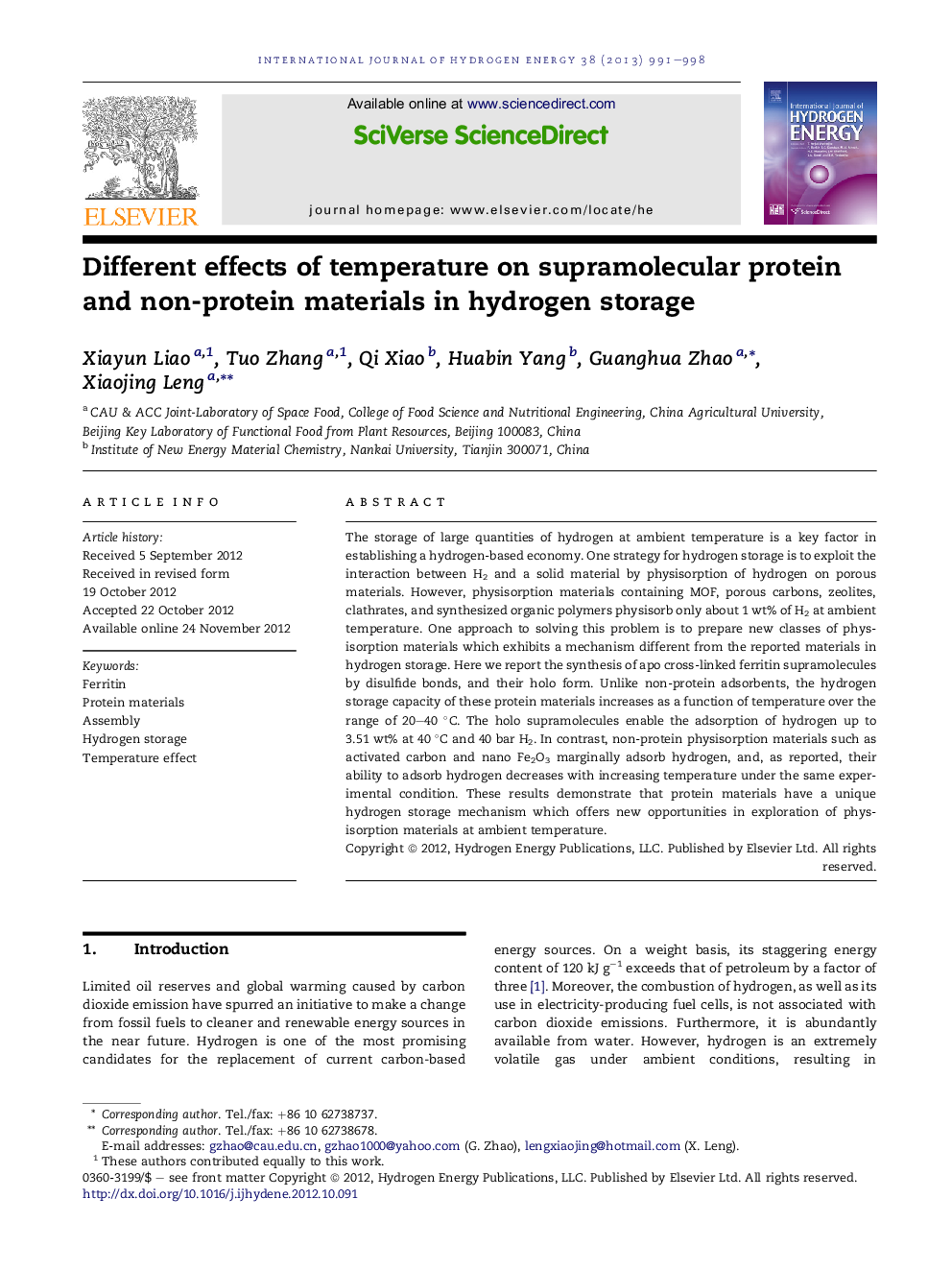| Article ID | Journal | Published Year | Pages | File Type |
|---|---|---|---|---|
| 1282065 | International Journal of Hydrogen Energy | 2013 | 8 Pages |
The storage of large quantities of hydrogen at ambient temperature is a key factor in establishing a hydrogen-based economy. One strategy for hydrogen storage is to exploit the interaction between H2 and a solid material by physisorption of hydrogen on porous materials. However, physisorption materials containing MOF, porous carbons, zeolites, clathrates, and synthesized organic polymers physisorb only about 1 wt% of H2 at ambient temperature. One approach to solving this problem is to prepare new classes of physisorption materials which exhibits a mechanism different from the reported materials in hydrogen storage. Here we report the synthesis of apo cross-linked ferritin supramolecules by disulfide bonds, and their holo form. Unlike non-protein adsorbents, the hydrogen storage capacity of these protein materials increases as a function of temperature over the range of 20–40 °C. The holo supramolecules enable the adsorption of hydrogen up to 3.51 wt% at 40 °C and 40 bar H2. In contrast, non-protein physisorption materials such as activated carbon and nano Fe2O3 marginally adsorb hydrogen, and, as reported, their ability to adsorb hydrogen decreases with increasing temperature under the same experimental condition. These results demonstrate that protein materials have a unique hydrogen storage mechanism which offers new opportunities in exploration of physisorption materials at ambient temperature.
► Novel apo/holo cross-linked ferritin supramolecules by disulfide bonds were prepared. ► The holo supramolecules enable the adsorption of hydrogen up to 3.51 wt% at 40 °C. ► Protein materials have a unique hydrogen storage mechanism at ambient temperature. ► Temperature has different effects on protein and other materials in hydrogen storage.
